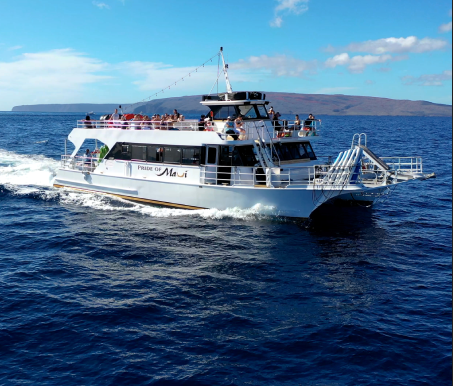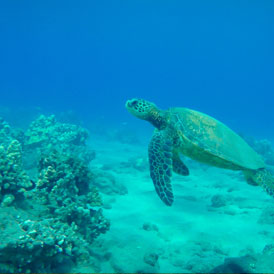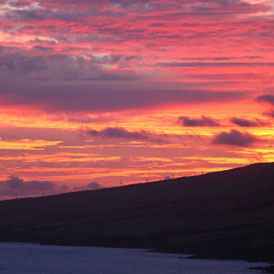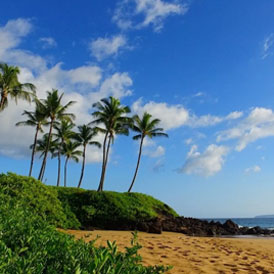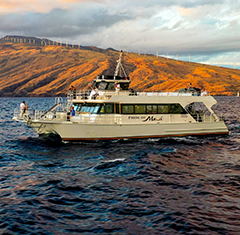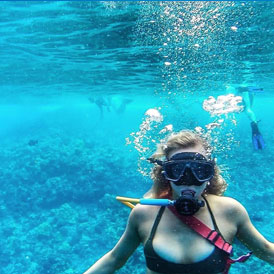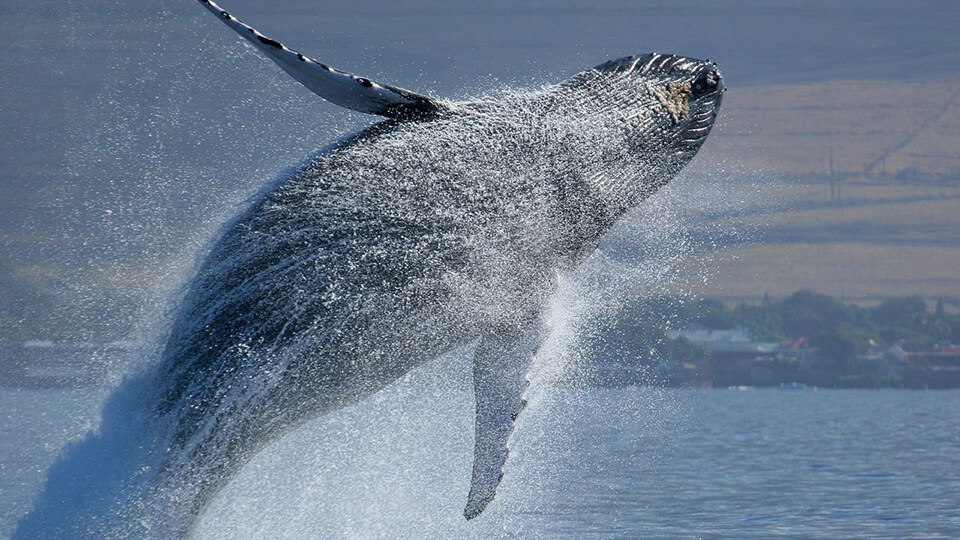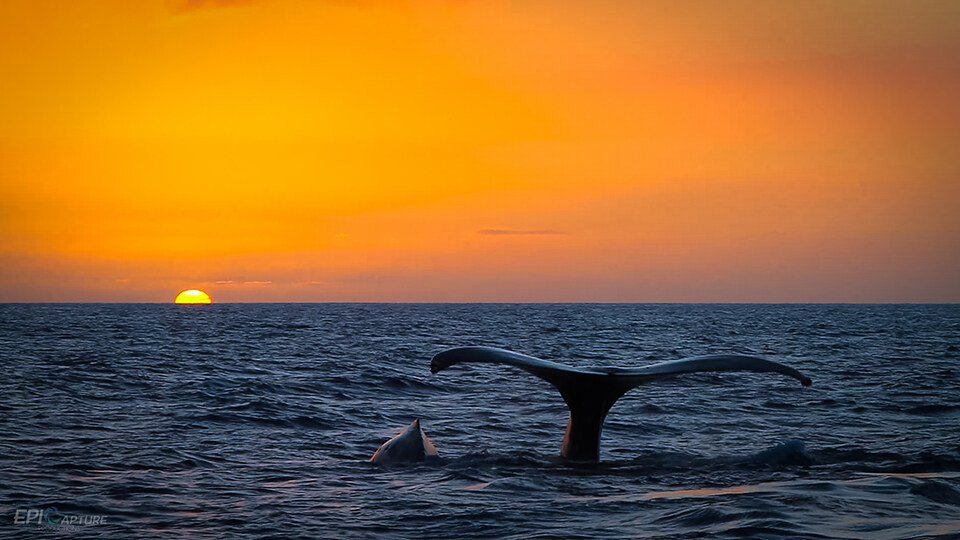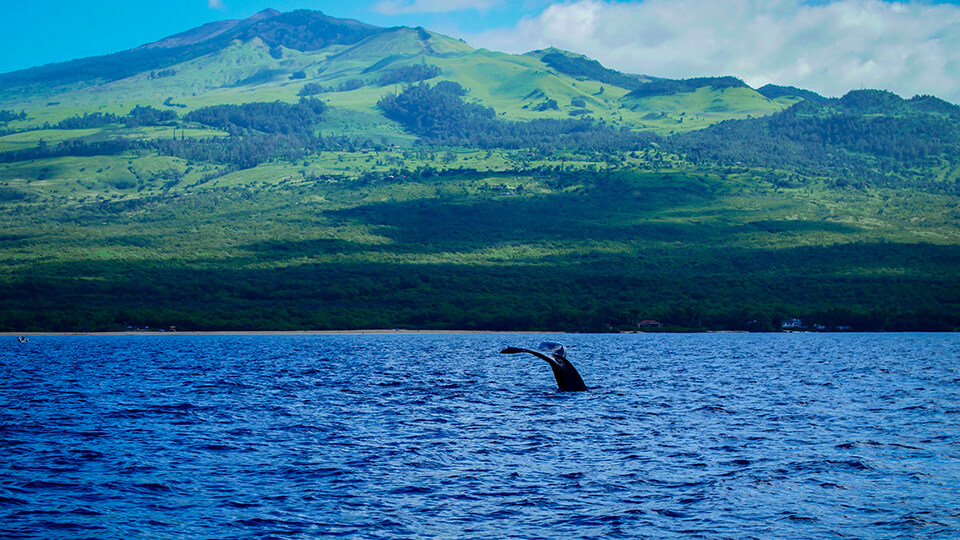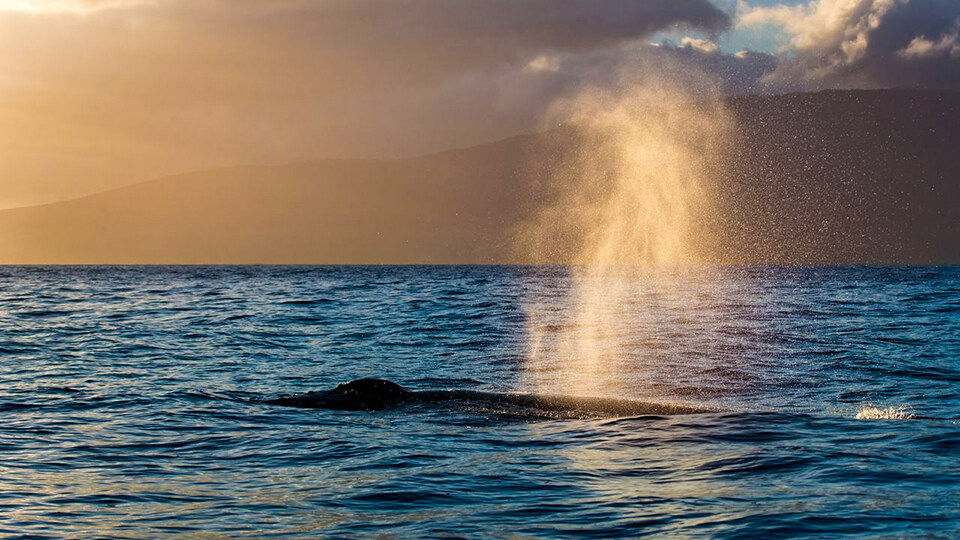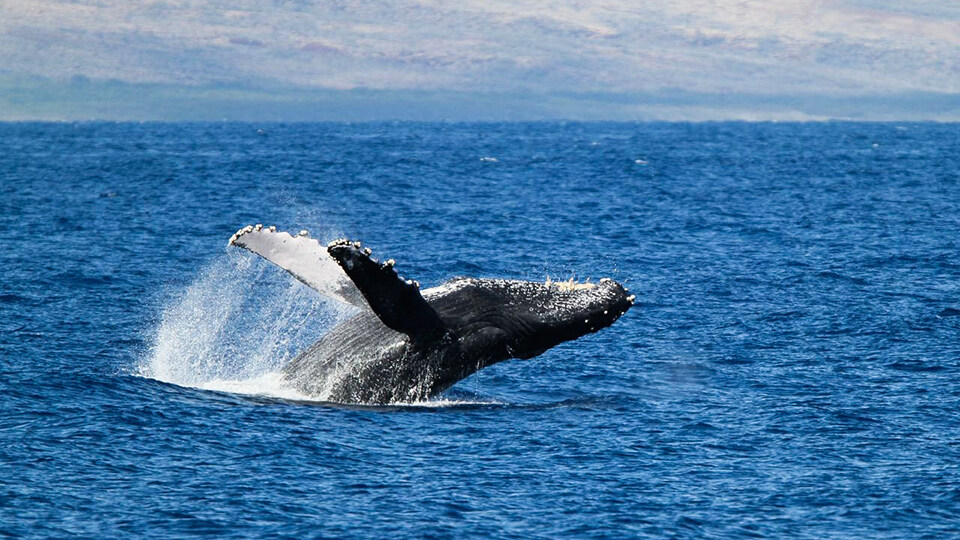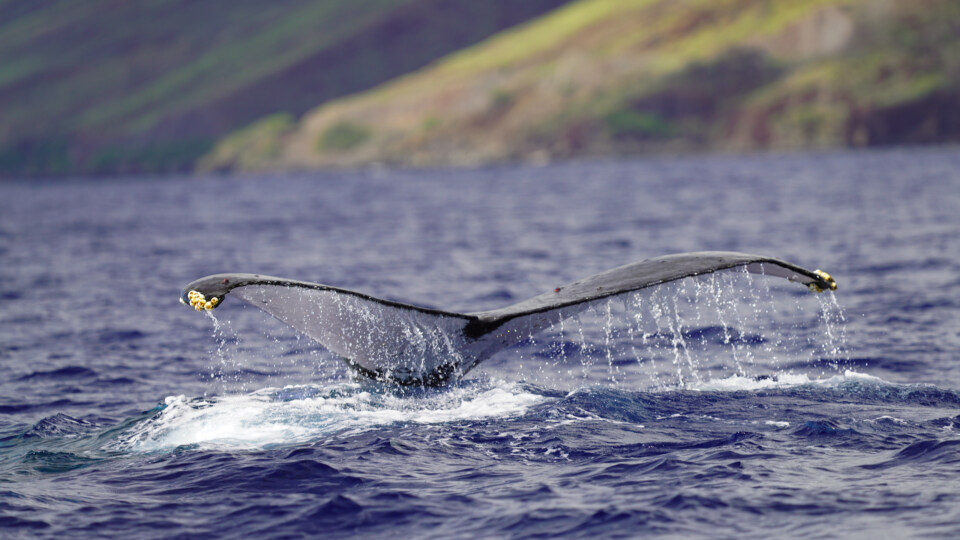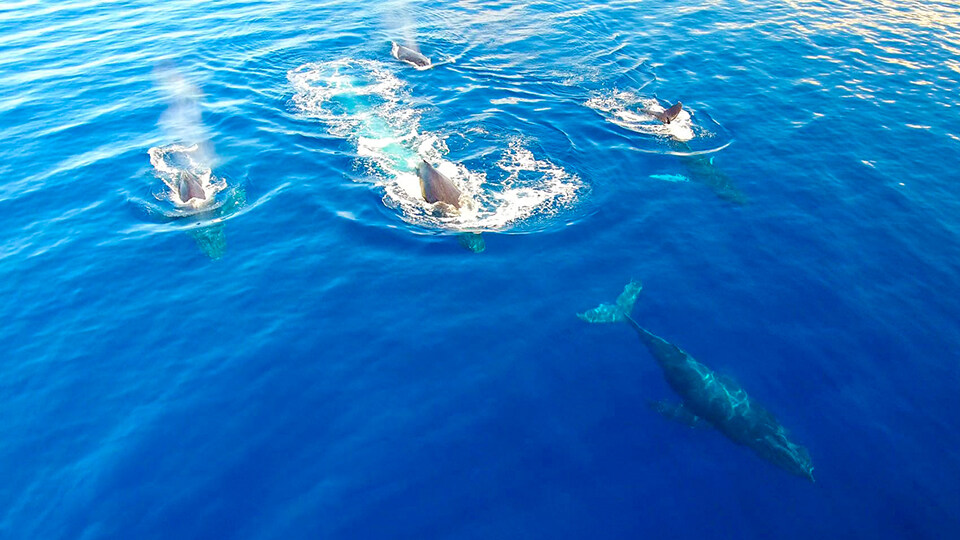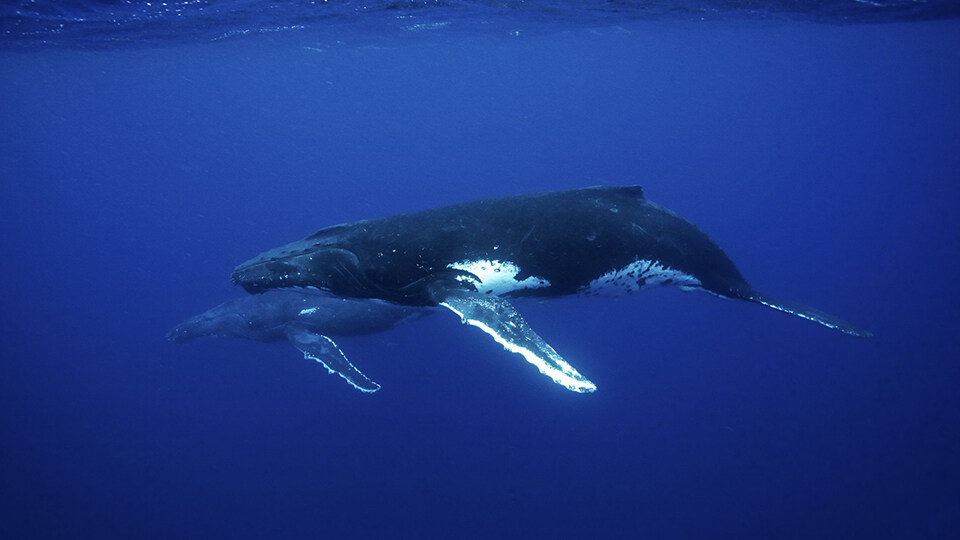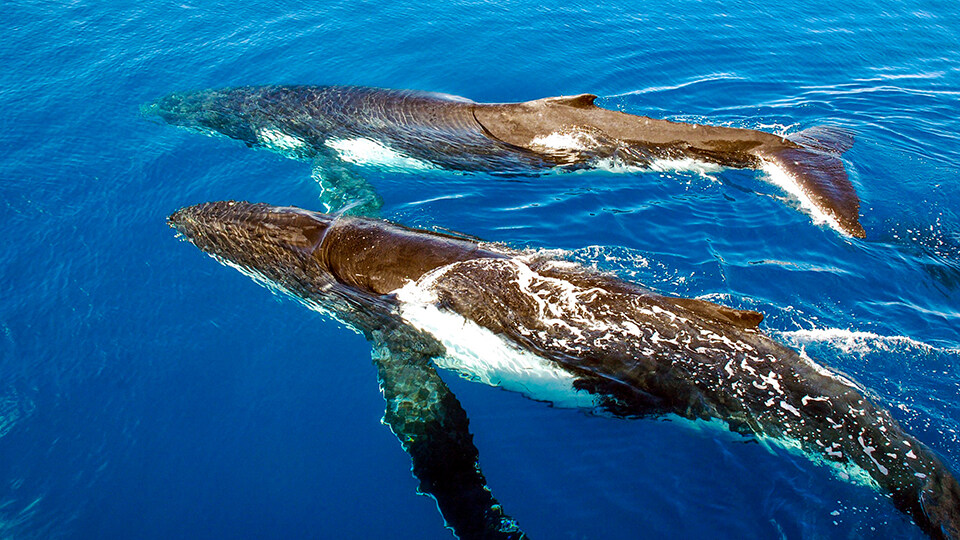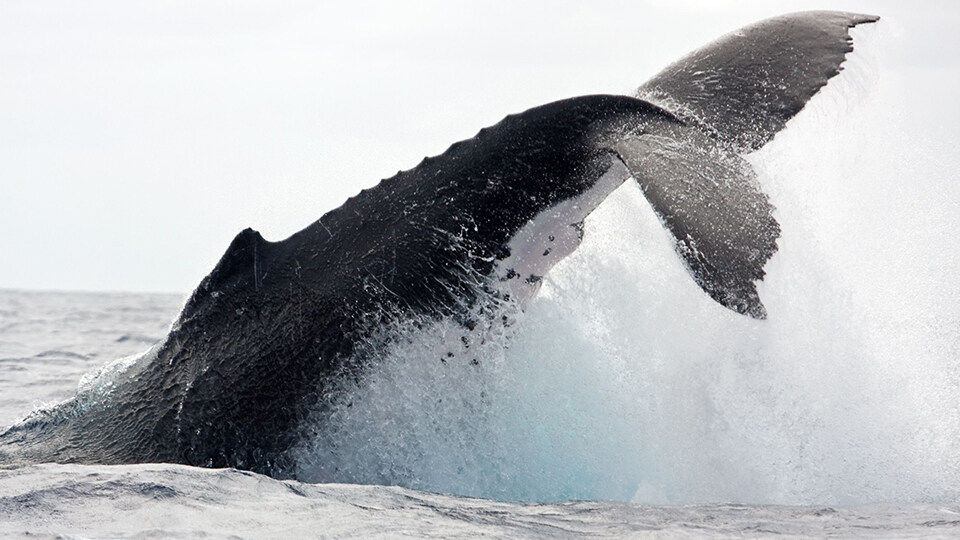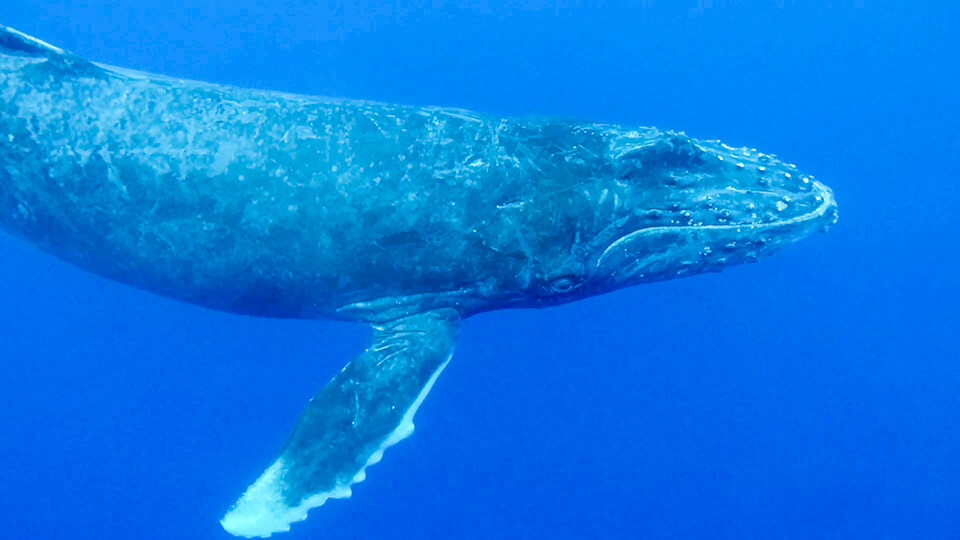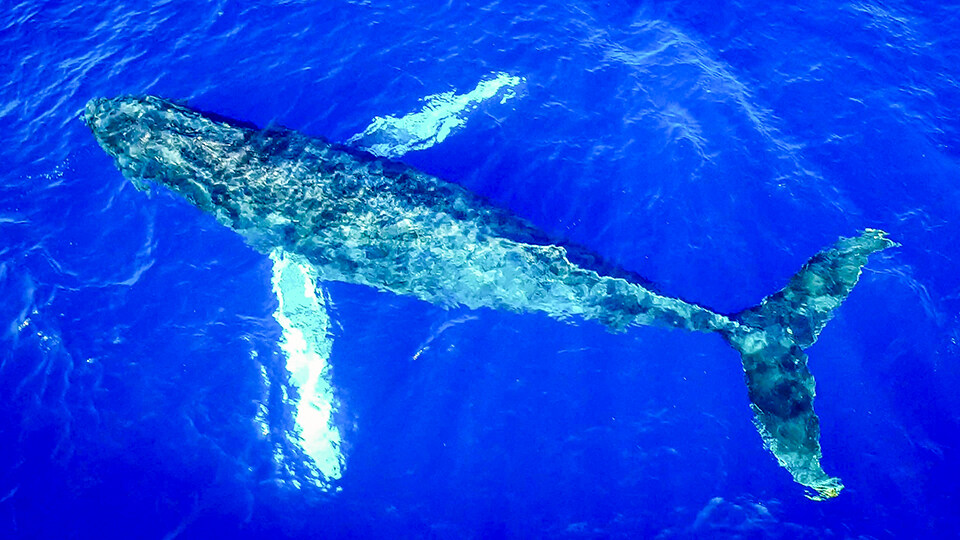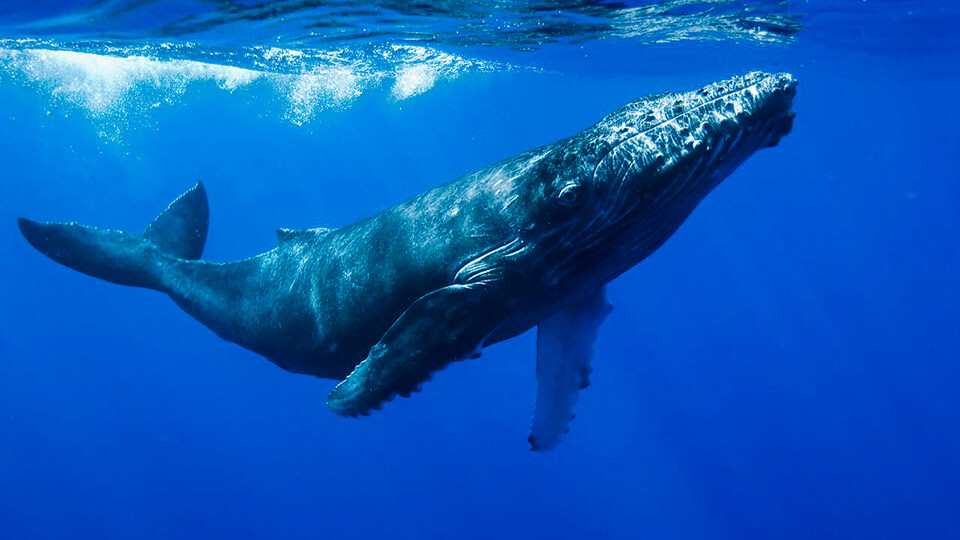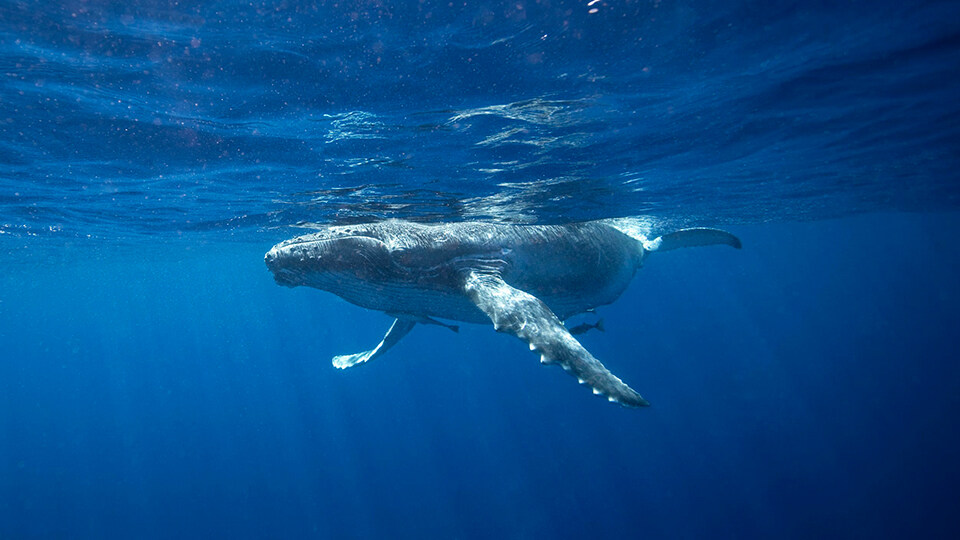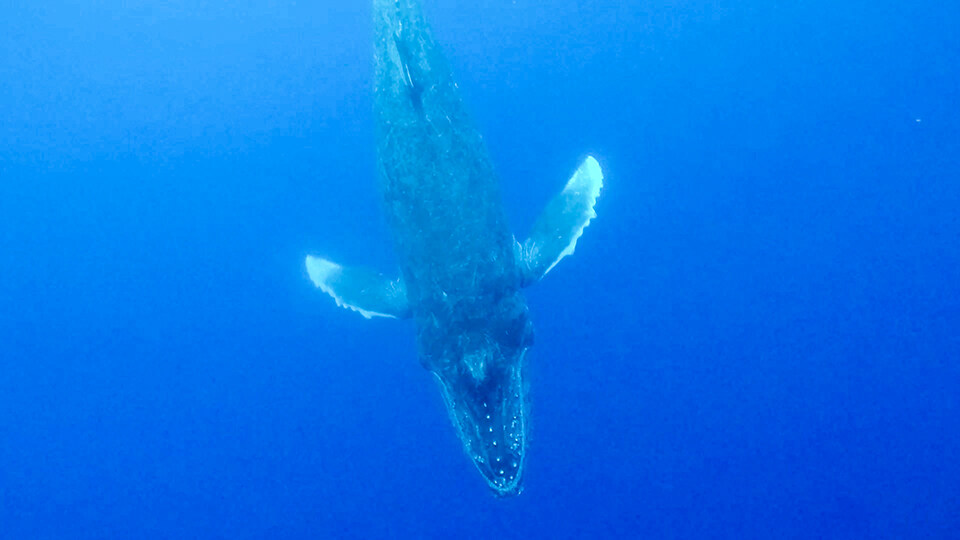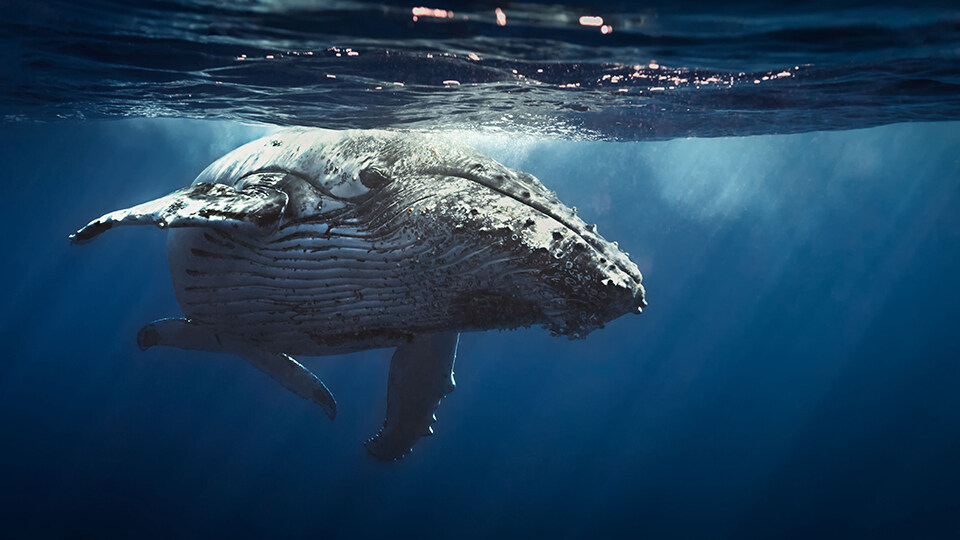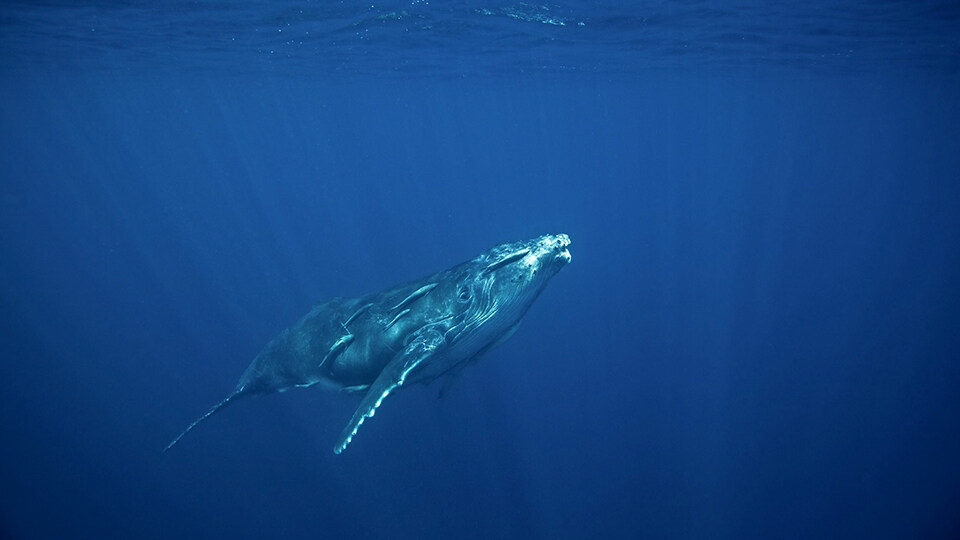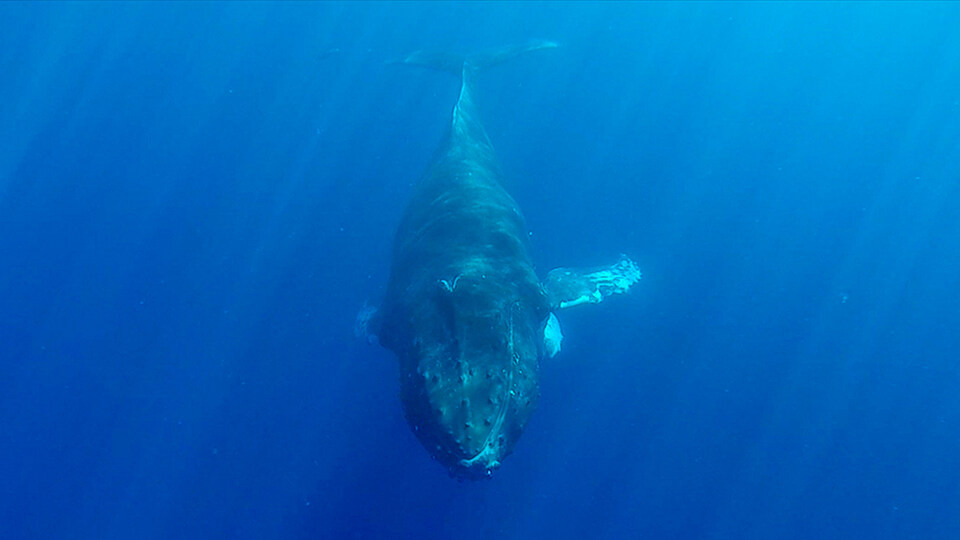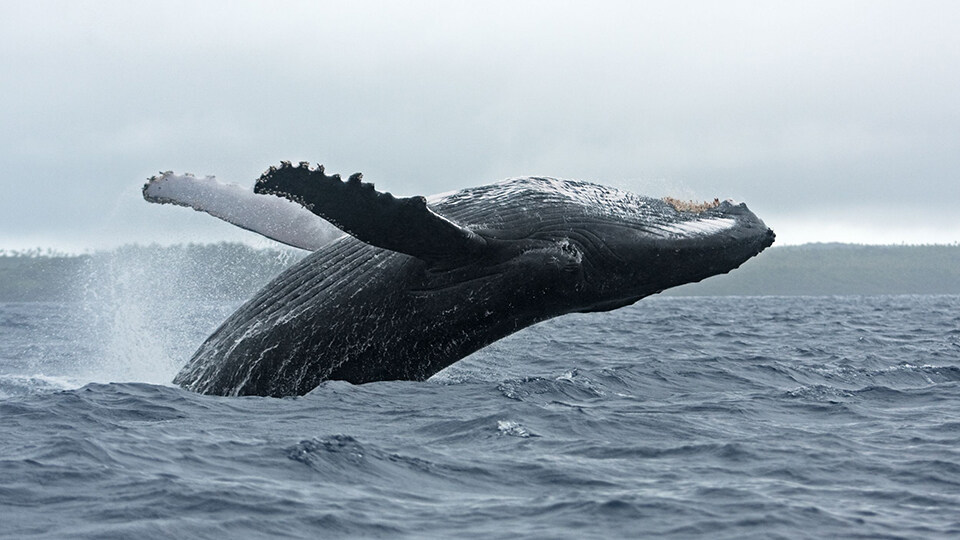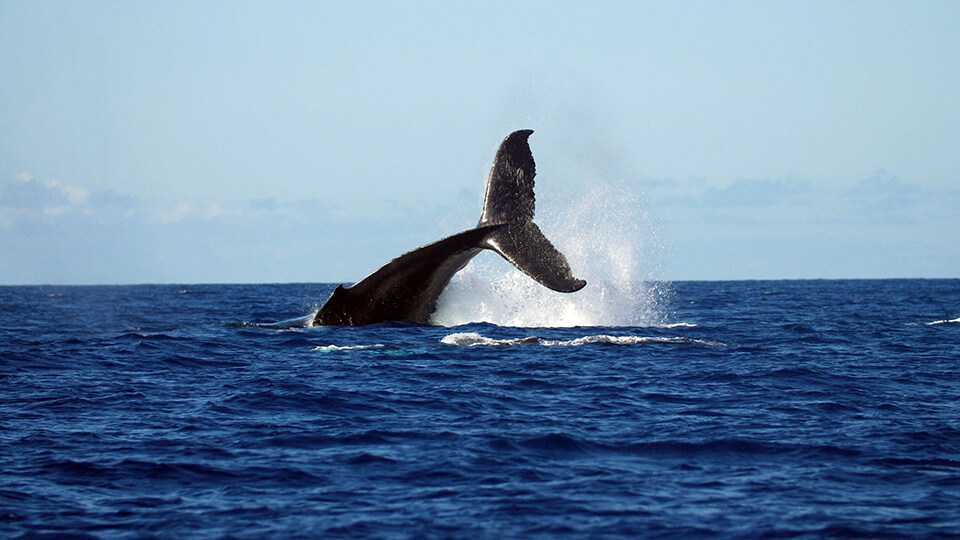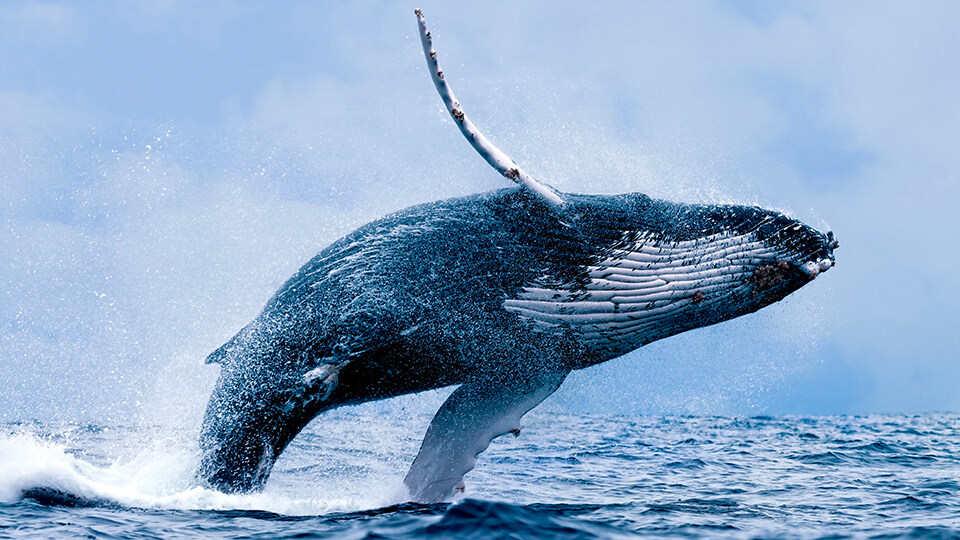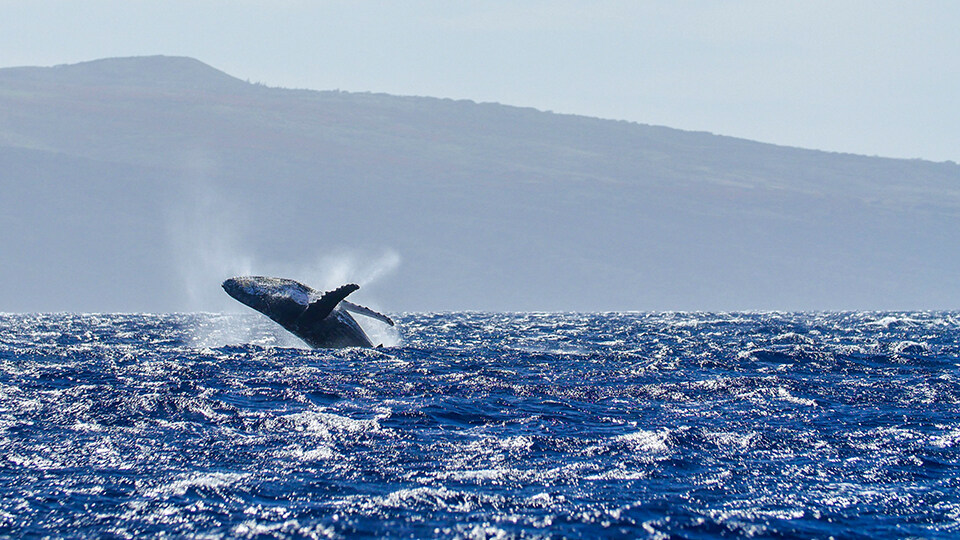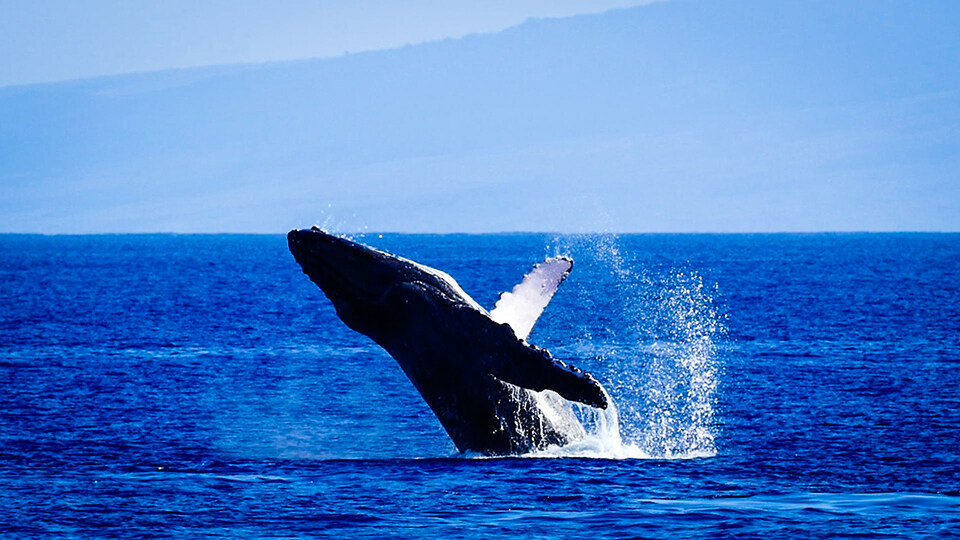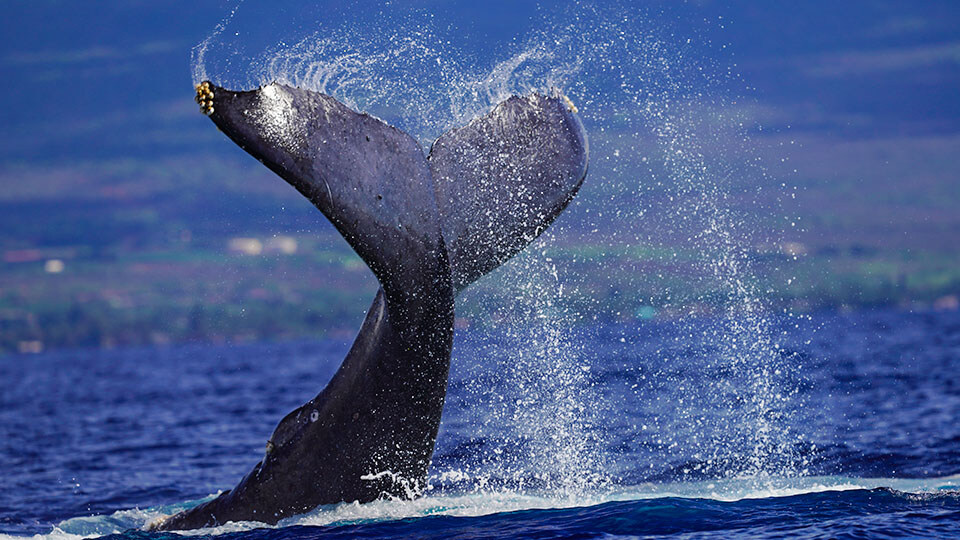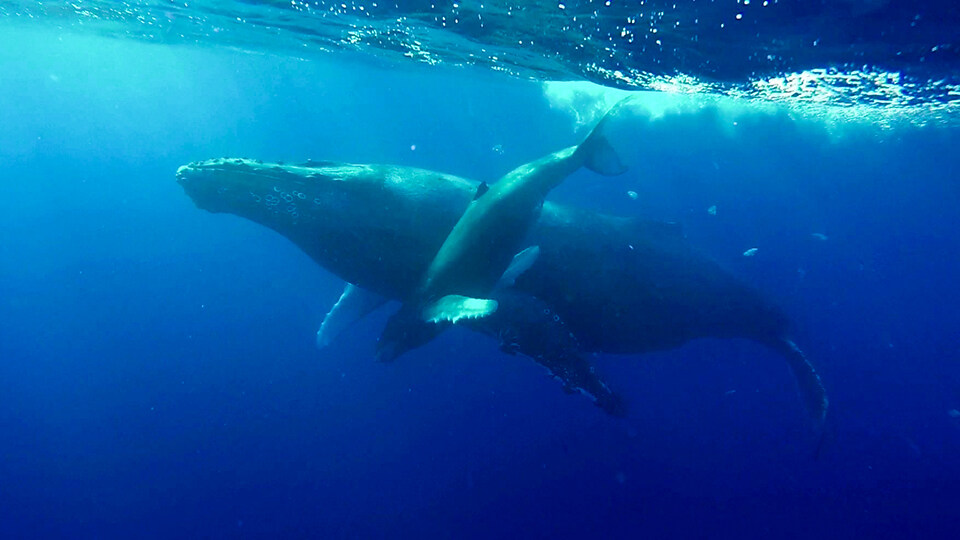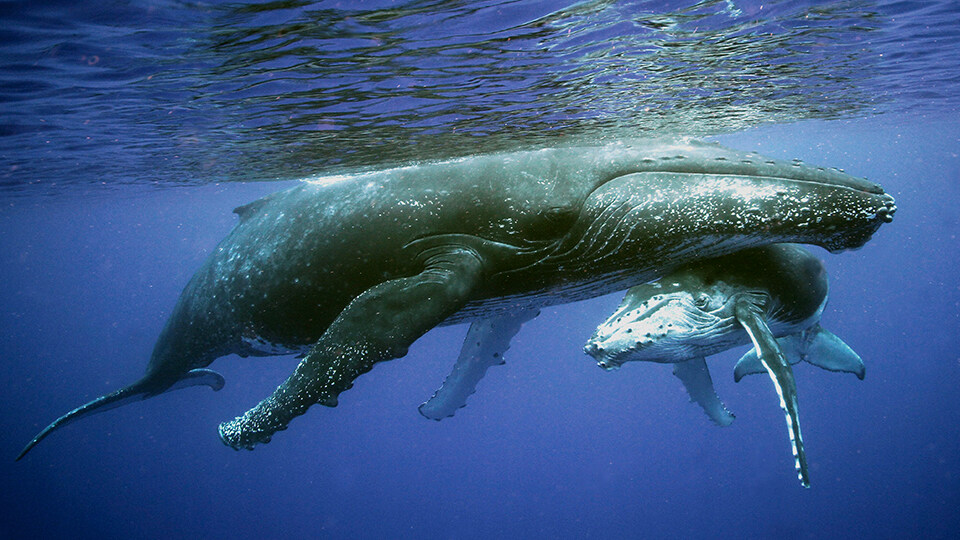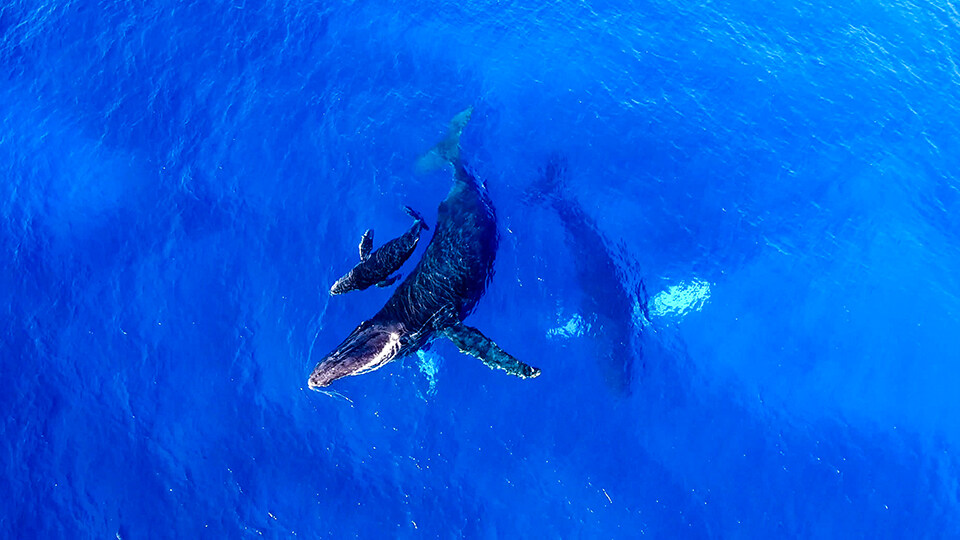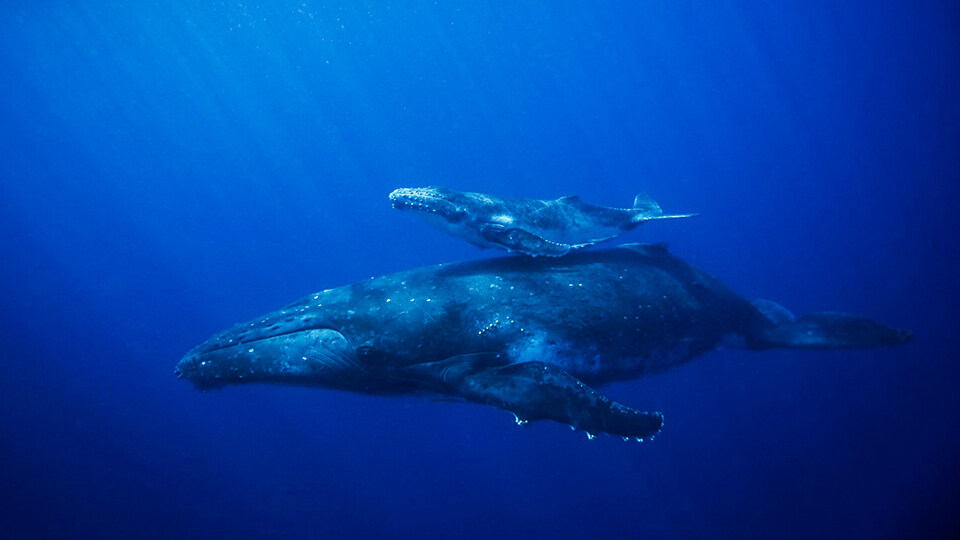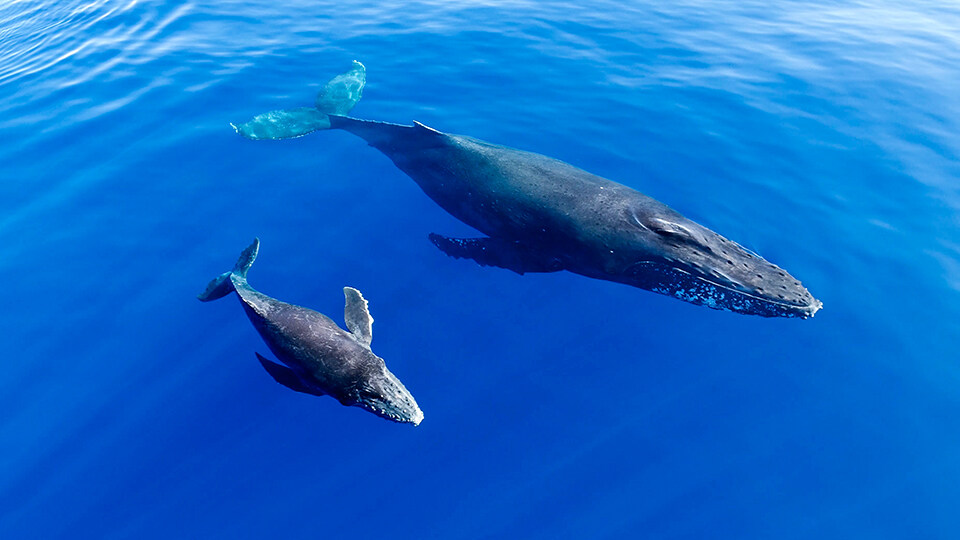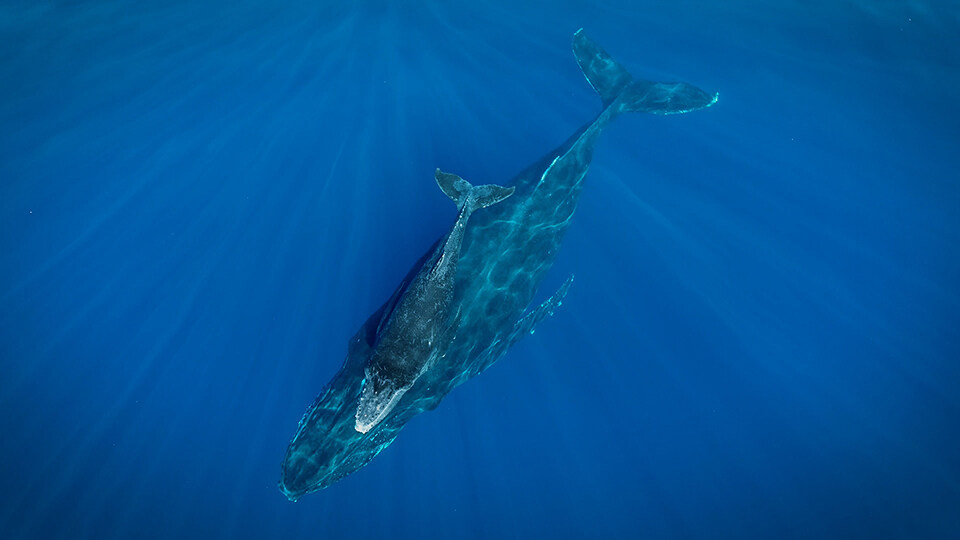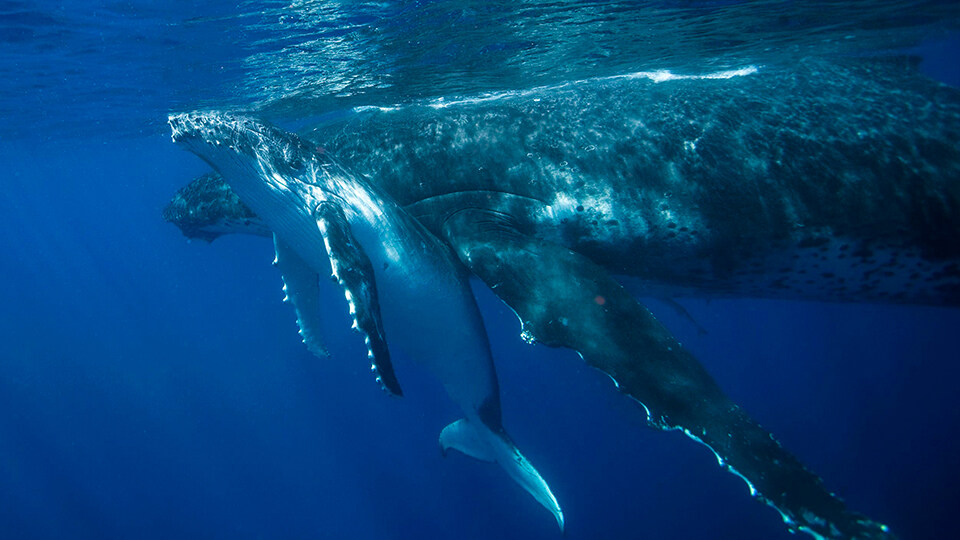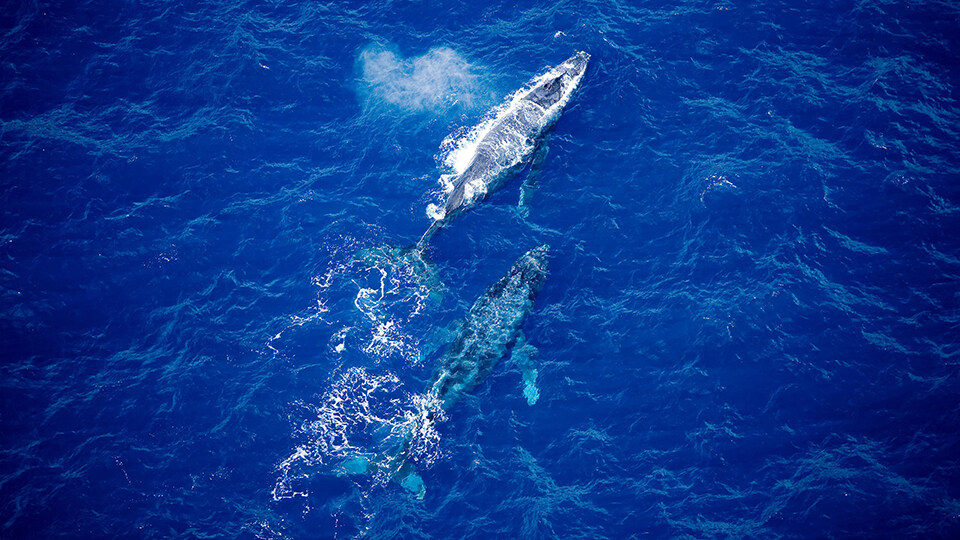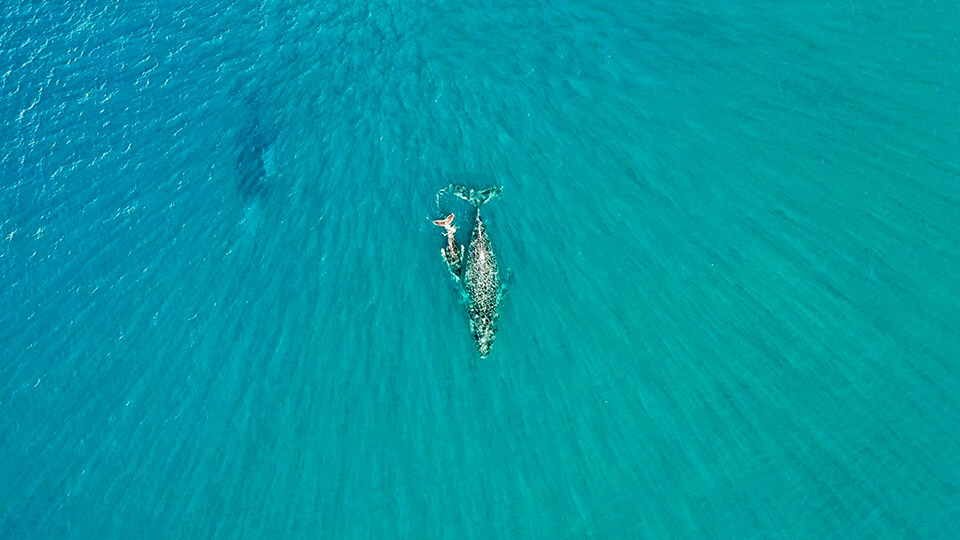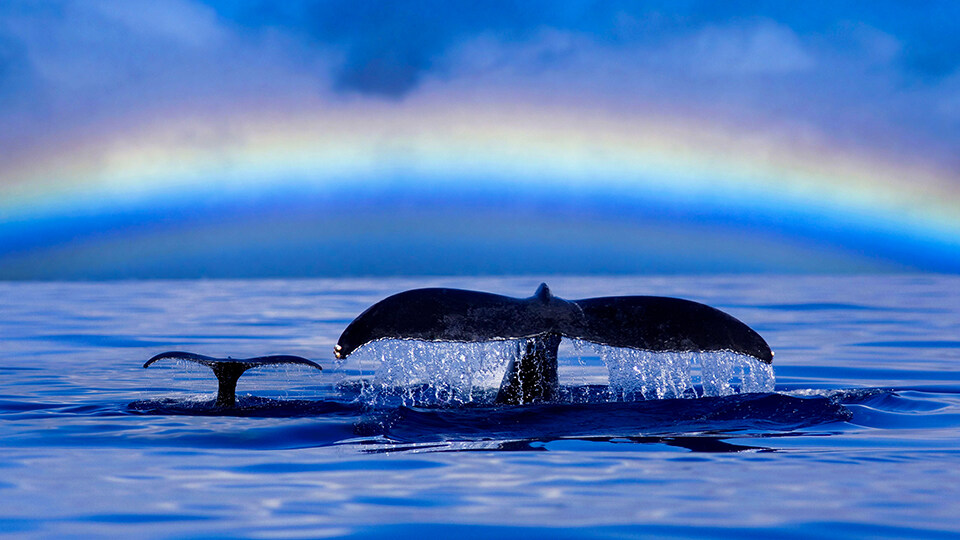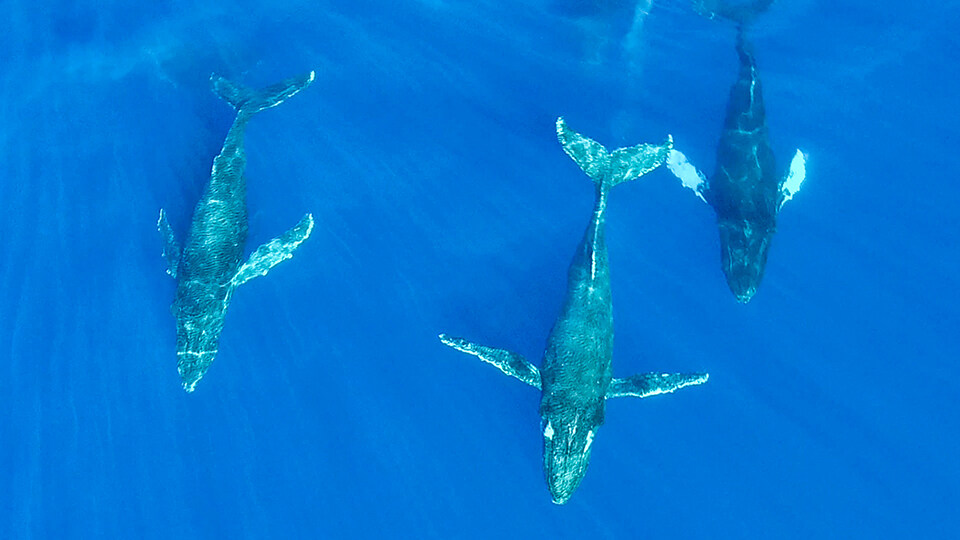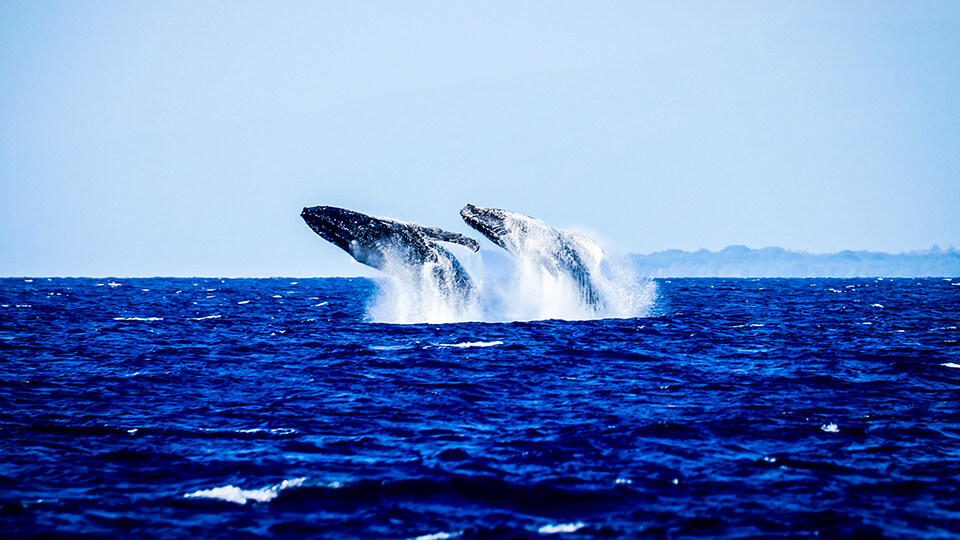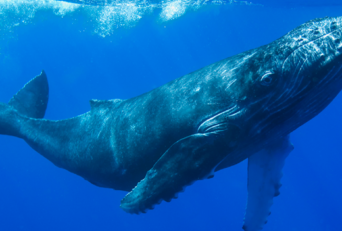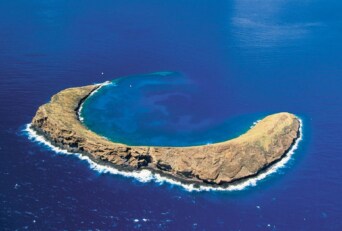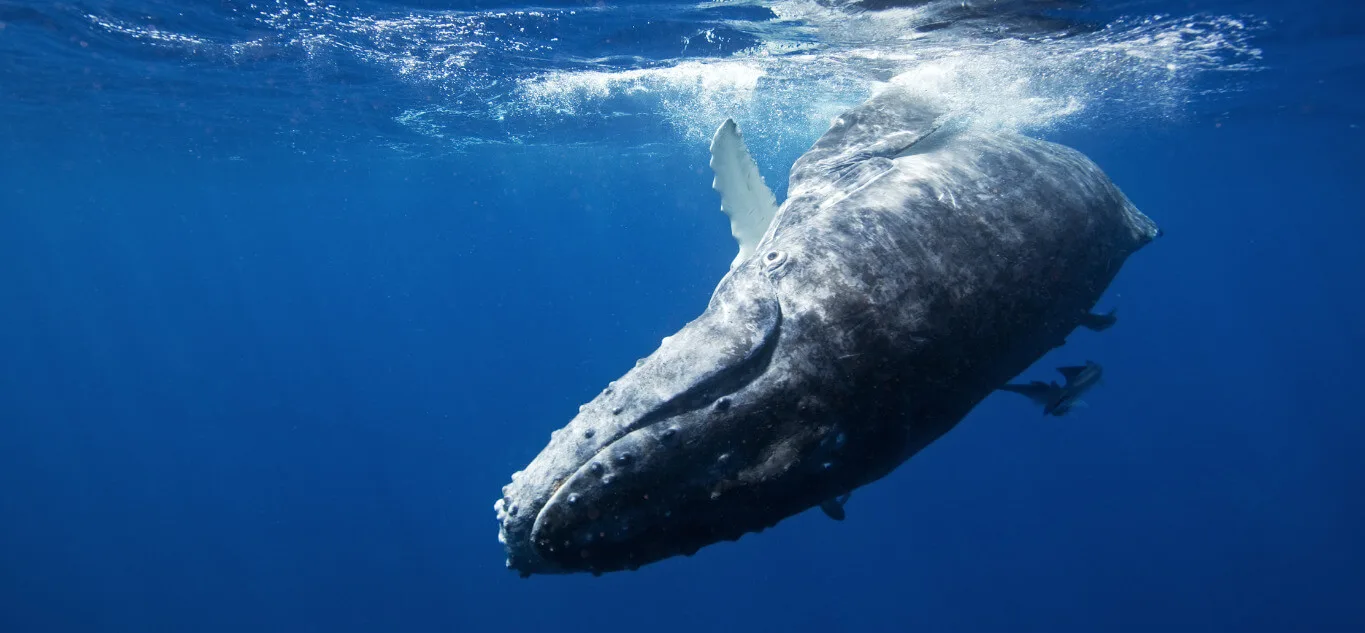
“Born is the
whale living in
the ocean.”
Enjoy this North Pacific Humpback Whales 101 blog to learn some fun facts and prepare for your next adventure in paradise.
Humpback Whales & Ancient Hawaiian Culture
The migration of whales to and around the Hawaiian Islands is an annual winter event that has been familiar to Native Hawaiians over the centuries. It is estimated that over 50% of the North Pacific humpback whale population comes to Hawaii in the winter!
Whales Are Built for Long Journeys
The North Pacific humpback whales are the fifth largest whale species on the planet and they can grow to 60 feet long and weigh between 25 and 40 tons. Like most whales, the females are longer than the males. The whales have huge tails, measuring up to 18 feet wide. These powerful tails propel them along their 2500-mile migration, which takes them from their feeding grounds in northern cold water to their breeding and calving grounds in warmer waters. The fastest known migration is just 36 days—that’s almost 70 miles per day!
Whale Songs of Giants
In the early 1950s, scientists began to record humpback whale songs in Hawaii. The songs last somewhere between 7 to 30 minutes, though they will often repeat songs for hours on end. The songs can be heard up to 20 miles away. When you go on a snorkeling trip off the coast of Maui during whale season you can hear them underwater!
Humpback Whale Acrobatics
We’ve all seen film footage of giant humpback whales leaping out of the water and coming back down with a huge splash. Humpback whales use their powerful fluke (tail fin) to launch themselves almost entirely out of the water, and this incredible spectacle is called breaching. While many other whale species breach, humpback whales seem to breach more frequently.
The Care and Feeding of Baby Humbpack Whales
After all of this communication to find a mate, a female whale will give birth every 2-3 years in the best of circumstances. Calving in the warm waters of Hawaii during winter gives the newborns a better chance at survival than in the colder waters where they dwell during the summer months. A newborn whale calf can weigh as much as a ton but it still requires much attention.
Growing Numbers of Humpback Whales & New Threats
During the last twenty years, the North Pacific humpback whale population has grown from approximately 2,000 to more than 21,000! During the peak of humpback whale season in February, it is estimated that “somewhere between 10,000 and 12,000 (whales) or so come to the Hawaiian islands each year,” said Marc Lammers, a research ecologist with NOAA’s Hawaiian Islands Humpback Whale National Marine Sanctuary.
Maui is the
best place for
Humpback whale sightings
You won’t want to miss your chance to see these incredible animals as they dance and sing their way through the gorgeous turquoise waters of Hawaii. Mahalo for reading our blog.
